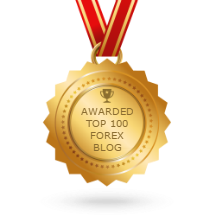The forex industry is dynamic and numerous changes have taken place in the market over time. And, two of the most recent developments are the MiFID II directive in 2017, which sought to regulate the levels of transparency to greater heights and the growth of cryptocurrency space.
The new directive is designed to influence and augment investor protection by ensuring increased transparency in trade assets such as fixed incomes, exchange-traded funds, equities and foreign exchange with the aim of tightening control over the forex industry.
The MiFID II directive of 2017 has forced some European traders to seek other businesses and trade offshore in jurisdictions that are less regulated. Those who were keen to continue offering services in Europe have had to adjust their businesses to match the set regulation requirements.
The cryptocurrency craze has been catching up, and in 2017 it gained ground pretty fast. More and more people have been venturing into the crypto world globally as the digital currency gains popularity.
Bitcoin and other cryptocurrencies have been more attractive to investors due to their volatility which enables the investors to anticipate extraordinary profits that are unlikely on other financial markets.
Digital platforms have been emerging over time enabling traders to conveniently offer their clients the opportunity to grow their investments in the crypto world.
Incorporation of Cryptocurrency into the Forex Industry
The innovative blockchain technology has led to several changes in the financial markets—similar to the way Netflix changed the film industry and social media disrupted the internet.
Cryptocurrency experts refer to it as the “digital gold” and believe that the technology will change the course of business in the next 5 to 10 years. The Blockchain refers to an incorruptible ledger that exists in the digital space to improve transactions between parties in the financial world as a result of enhanced trading conditions.
The blockchain is not limited to the financial sector. As much as the technology is helpful in the forex industry, it is embraced in various sectors of the economy, from health to the legal sector, to the environmental industry, and so on.
Cryptocurrencies are popularly used as a short-term means of payment and are useful instruments for simplifying Know Your Client (KYC) on one hand and curbing Money Laundering on the other.
For example, the European Legal framework seeks to incorporate cryptocurrencies in their system to maximize the benefits of digital currencies and enlarge the list of instruments available for investment portfolios.
Present-Day Trends in the Forex Market
Investors have been embracing more civilized trading recently, forcing small brokerage firms operating under quasi-legal schemes to close shop.
Traders are now concerned with the types of products and services availed to clients and proprietary technologies used by companies as opposed to earlier trends where they were more interested in the bonuses and the number of rebates offered by a company.
In recent times, the web tunnel has made it possible for trading to take place in different markets after multi-asset cloud platforms were cropped up.
The blockchain technology has made it possible for investors to track information as traders share results of trading signals and trading charts.
This has led to the increase in social trading services enabling inexperienced businessmen or new entrants into the forex market to trade and achieve similar results to experienced traders.
The use of algorithmic trading in the forex market has also enabled unskilled traders in the programming field to develop their own trading robots, controlling the technical aspects of forex trading and automating routine activities.
Forex in 2018 and Beyond
The European forex market has room for expansion now that the numerous brokers who had been operating under quasi-legal systems have been faced out to offshore jurisdictions.
Thanks to the new MiFID II, consolidation of market players and improved transparency have made the forex market more attractive to clients with high expectations of a stronger financial space.

